VVAM Newsletter 98 – 2005
From the board
As you will read elsewhere in this Newsletter, the Airborne Museum has great plans for the future. The museum will be expanded over the coming years and the exhibition itself will undergo thor¬ough modernisation.
The Friends Society is also busy considering the future. Much has been achieved and organised dur¬ing the past 25 years, but, as our chairman Ben Kolster made clear in his letter to the Dutch mem¬bers in March 2005: if we wish to continue in this vein we are going to need a lot of help. A society can only run smoothly if, besides the board of manage¬ment, there are sufficient volunteers who are will¬ing to help in the organising of events, giving lec¬tures, issuing of Newsletters and publications, and so on. In this way we, in conjunction with the Air¬borne Museum, can continue to ‘spread the word’ about operation Market Garden in the future.
The internet has developed at breakneck speed over the past few years. The amount of information available, including on subjects related to operation Market Garden, increases by the day. We, too, intend making far more use of this medium in the near future, and plans are now being made with a view to achieving this.
We would like to know how the membership sees our society, and for this reason the chairman has sent a copy of the above-mentioned letter and a questionnaire to all our Dutch members. So don’t forget to complete the form and return it to us. Thanking you in anticipation!
Opening of ‘Operation Amherst’ exhibition
Sixty years ago the centre and north of the Nether¬lands were liberated, chiefly by units from the Canadian and British armies. However, less well- known by far is the fact that French soldiers were also involved. During the night of 7/8 April 1945, two regiments of French parachutists, 702 men in all, were dropped in Drenthe and south-east Friesland. They were split up into 47 groups. Their orders were to secure all bridges along the allied lines of advance, and sow confusion among the German defenders. They were also required to capture the airfields at Steenwijk, Eelde and Leeuwarden, assist the local Resistance, and gather information. The operation was codenamed ‘Amherst’. Not all of the objectives were achieved and 33 French soldiers lost their lives in the fighting.
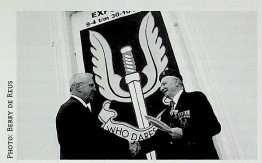
Airborne Museum ‘Hartenstein’, 8 April 2005. After offi cially opening the exhibition about operation ‘Amherst’, Mr Ihpet-Thome was presented with a commemorative plate by director Wybo Boersma. In April 1945, as a 1st Lieutenant, Mr TUpet-Thome took part in the airborne landings in the north of the Netherlands,
An exhibition was opened in the Airborne Museum on 8 April last featuring this final airborne operation in the Netherlands in World War II. A number of French veterans – who as young men had taken part in ‘Operation Amherst’ in April 1945 – were present at the opening. The exhibition runs until 30 October this year.
The book ‘Operation Amherst’ by Roger Flamand was published earlier in the Netherlands. It was translated from French into Dutch by J.H. Jansen and was published by Boom of Amsterdam (ISBN 90 5352 770 2). The book comprises 225 pages and is lavish¬ly illustrated with photographs. It is on sale in the Airborne Museum, price € 24.90.
Expansion plans for the Airborne Museum
On 1 July 2004 Frans Smolders was appointed new deputy director/curator of the Airborne Museum, his most important assignment being the producing of a plan for the modernisation and expansion of the museum. One of the basic reasons for this is the steady decline in the number of visitors who actual¬ly lived through the Second World War. This means that the museum must identify and aim at attract¬ing other target groups. Another problem is the museum’s size. It is too small to allow the develop¬ment of new initiatives relating to a more modern exhibition. With these and other points as the guid¬ing principles, Frans set about the task with great energy, and on April 11 was able to present the ini¬tial version of his plans. Accommodation is the fore¬most point in the plan. Huize Hartenstein was orig¬inally a private dwelling, later becoming a care home and later still an hotel. The house is now a listed building, therefore any possible extensions have to be handled with great care.
Some time ago former Society chairman Chris van Roekel proposed a plan for the building of an under¬ground extension on the south side of the Harten¬stein, and this plan has now been chosen. This will provide an increase in space of some 800 square metres, which, besides creating room for exhibits, will need to include an auditorium. The new entrance will be on the east side, and an external lift will be built on the west side. The extension design is the work of Oosterbeek architect Wim Visser. During the presentation it was emphasised that this is a provisional design which has still to be studied thoroughly by all concerned. Further details of the plan will be gone into in coming editions of the Newsletter.
Lecture about General Sosabowski
On Friday 18 March, Dr. Michael Hal Sosabowski, the great-grandson of Major General Stanislaw Sosabowski and lecturer at Brighton University, gave a lecture on his famous great- grandfather. The lecture was organised by the Airborne Museum in conjunction with the Royal Military Academy, Breda. Almost 150 interested people turned up at the Concert Hall in Oosterbeek to listen to Michael Sosabowski who, with the aid of many photos, gave an overview of the history of the First Polish Independent Parachute Brigade. He talked about the raising of the brigade in England, the military exer¬cises, the planning for Operation Market Garden, the deployment at Arnhem, and the subsequent fate of the Polish Brigade. He also gave his personal comments on the life of the General, both during the war and after. And of course, the controversy that arose between General Sosabowski and a number of Allied commanders was not ignored.
It was a lively evening, and after the lecture plenty of time was allowed for questions from the floor.
To give this Polish evening an extra dimension Airborne Museum personnel had set up an exhibi¬tion in the lecture hall. It displayed material that has been excavated over the years from the former Polish dropping zones at Driel.
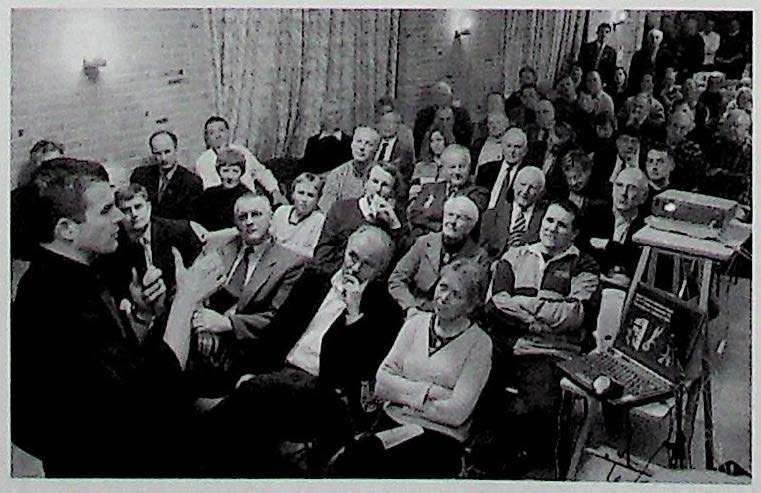
18 March 2005. Dr. Michael Hal Sosabowski gives a lec ture about his great-grandfather, General Stanislaw Sosabowski, in the Concert Hall in Oosterbeek.
Wybo Boersma made ‘Honorary Member’
During the recent AGM on 2 April, Wybo Boersma was made ‘Honorary Member’ of the Society of Friends of the Airborne Museum.
For many, many years, Wybo has attended the board meetings of the Friends’ Society as the Airborne Museum Foundation’s representative, and as such he acts as contact person between both boards of management. On request he regularly advises the SFAM board on issues concerning both the museum and the society.
“Universities honour the lustrum of people who have betokened much for the world of science with an Honorary Doctorate. The Friends’ Society marks its 25th Anniversary by conferring this ‘Honorary Membership’”, said Chairman Ben Kolster. Besides a charter, Wybo Boersma was given a number of book tokens in appreciation of his exceptional efforts.
Burial of Private Arthur Foster
In Newsletters number 92 (December 2003) and number 94 (June 2004), I wrote two small articles about Private Arthur Foster of the Border Regiment, whose remains were found two years ago in the gar¬den of a house in Veerweg, Oosterbeek. The latter article was able to reveal that the identity of the sol¬dier in question had been released, but that the members of his family in the UK were apparently untraceable. Partly owing to this, Private Foster’s remains had still not been buried in the Airborne Cemetery more than a year after they had been recovered.
Very shortly afterwards, British member Mike Gallagher from Heaton reported that he, with the aid of a local newspaper, had tracked down a mem¬ber of Arthur Foster’s family. Arthur had been bom in Bolton, and the 31 August 2004 issue of the Bolton Evening News carried an article containing the relevant details.
Information on the family concerned was immedi¬ately sent to the British Ministry of Defence. I don’t know what happened then; probably nothing. There was still a faint hope that Arthur could be laid to rest alongside his comrades during the September 2004 Airborne Commemorations. But this did not happen, understandable in view of the short time available.
And six months further on things were still omi¬nously quiet. The amazing sluggishness shown by the British government in this matter was really unbelievable! But in another sense you have to admire them… In the first place, they failed to do in a year what Mike Gallagher managed to achieve in a day. And when they had all the details, it seems they simply fell asleep again at their desks. It is heart¬warming to see how the British authorities treat their war dead! On that point, therefore, it was enlightening, and sobering, to read what the British Ambassador in the Netherlands had to say in an article in De Gelder- lander of 9 September 2004. Mr Colin Budd stated from his residence in Den Haag that the British gov¬ernment is not greatly interested in the finding of the remains of servicemen. ‘We prefer to leave the people in peace’, said he. Meaning, therefore: ‘Simply leave them where they are and just accept that the next-of-kin will never know where their father or brother lies buried’. I call this a scandalous attitude with respect to the dead and their families.
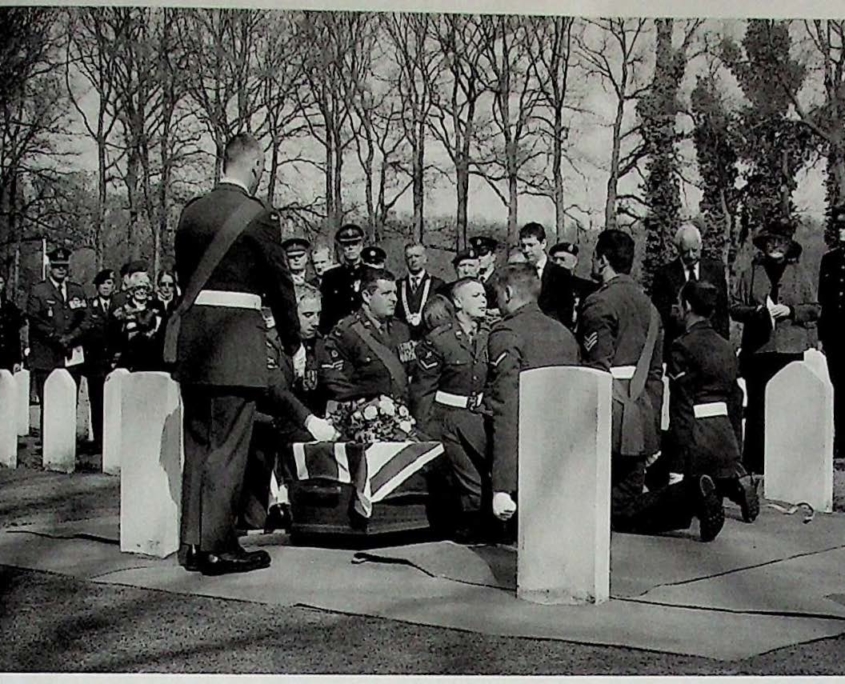
23 March 2005. Private Arthur Foster is buried with military honours at the Airborne Cemetery in Oosterbeek.
Well anyway, the notification finally came through that Arthur Foster could be buried amongst his comrades in the Arnhem (Oosterbeek) War Cemet¬ery. And that came to pass on 23 March 2005. With military honours and an appropriate British cere¬mony, and in the presence of old comrades and family members, this soldier of the Border Regiment was given his final resting place.
Above all else, it was gratifying to see that his grave¬stone was already available, ready to be placed over his grave. This has not always been the case: we usually have to wait for months.
It would appear that the Commonwealth War Graves Commission has brought about a positive policy change. At least there is now one British organisation that goes about its work efficiently!
Meanwhile, ten months ago the identity of a soldier, till then buried in Oosterbeek war cemetery as ‘unknown’, became known. Diligent research by the Dutch Army’s Recovery and Identification Service, led by Sergeant Major Geert Jonker, brought to light the identity of the soldier in question – Lance Sergences during and after the Battle of Arnhem and was based on a diary he kept at the time. Last September, the complete, detailed story was published in book form under the title ‘No Surrender at Arnhem’.
Private Peatling belonged to HQ Company, 2nd Parachute Battalion, and he arrives at the Arnhem road bridge with this unit during the evening of Sunday September 17 1944. He is ordered to accom¬pany Major Wallis (second-in-command of the bat¬talion) in a search for boats in which the British could cross to the south bank of the Rhine. On the way they become separated in the dark. On his way back to the bridge, Peatling meets a section of Military Police who are taking German prisoners to the police station in Boven-Beekstraat. They ask Peatling to join them, and on arriving at the police station he is ordered to remain with the section. A German attack follows, and after a fierce gun battle the British surrender. However, Peatling decides against surrender, and dashes up to the police sta¬tion attic, there to await the arrival of the British Second Army in Arnhem.
He manages to hide out for six weeks in the attic. After the Battle of Arnhem the civilian population is forced to leave the city, and every day Peatling searches the empty houses and buildings in the sur¬roundings of Boven-Beekstraat for water and food to help him survive.
On 31 October he is discovered by Dutch people who inform the Arnhem Resistance movement. He is picked up by a well-known Arnhem resistance fighter, Johannes Penseel, who hides Peatling in his own (Penseel’s) house in Velperplein. Penseel’s resistance group operates out of this house, and its members move about the empty city wearing stolen police uniforms.
At the end of December 1944 things become too hot for Peatling in Arnhem. Via a number of evaders’ addresses in the Veluwe, he arrives in Achterveld, where he again experiences numerous adventures. An end is finally brought to this nomadic way of life in April 1945, when he is liberated by Canadian troops.
Peatling describes this bizarre period of his life in an enthralling manner, and speaks of his enormous admiration for the Dutch Resistance.
‘No Surrender at Arnhem’ (ISBN 0-9522992-1-6) was published by the author. The book consists of 144 pages, is illustrated with photos and maps, and costs € 22.50. It is on sale in the Airborne Museum and Oosterbeek bookshops.
The book can be ordered direct from the author in the UK at 36 Park Lane, Wimborne, BH21 1LD, tele¬phone 01202 889645. The price is £ 16.95, including post and packing.
Appeal from Down Ampney
Down Ampney is a small village in Gloucestershire, England. It numbers 230 houses, and a beautiful old church dating from 1263. In 1943 an airfield for No. 46 Group RAF Transport Command was constructed close to the village. From 17 up to and including 23 September 1944, Dakota squadrons flew numerous flights to Arnhem. On 17 and 18 September they towed Horsa gliders, and over the days that followed they carried out re-supply missions.
Flight Lieutenant David Lord left Down Ampney for Arnhem on 19 September on a re-supply flight that was to end in tragedy.
The airfield was abandoned in April 1946, and the runways were largely demolished in the years that followed. The church still recalls the war years with various images and objects, but the most impressive memorial by far is the wonderful stained-glass win¬dow depicting the coat-of-arms of 271 Squadron and David Lord’s Dakota. Sadly, it now seems that the church roof – whose last thorough restoration was carried out 140 years ago – is in a dreadful state and leaks badly.
An architectural survey has revealed that the pres¬ent roof is beyond repair. Complete renewal is nec¬essary. Down Ampney’s small village community will never be able to raise the cost on its own (£ 120,000) for the restoration; therefore an action has been started aimed at saving this beautiful little church. If you would like to contribute to the restora¬tion fund, please contact Mrs. Sheila Burgess, 44 Riverway, South Cerney, Cirencester, Gloucestershire GL7 6HZ, United Kingdom, telephone 01285 860796, e-mail sheila@smburgess.fsnet.co.uk.
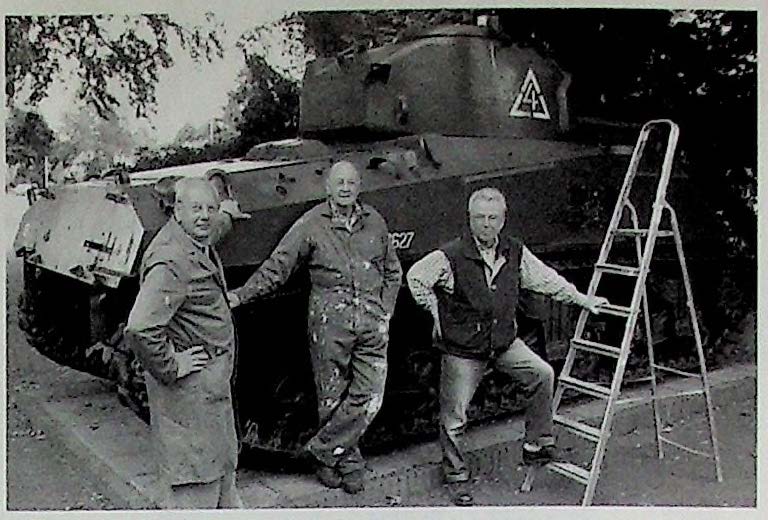
20 August 2004. Three volunteers: Henk van de Brand, Cees Wichhart and Oost Rodermond, pose by the Sherman tank next to the Airborne Museum, which they refurbished.
Facelift for the Sherman tank and 17-pounder cannons
You notice it immediately as you walk by: the Sherman tank and the 17-pounder anti-tank guns at the Airborne Museum are again bright and shiny. This is thanks to three of our society’s volunteers: Cees Wichhart, Oost Rodermond and Henk van de Brand, who were busy for days last August giving these muse¬um pieces a new top coat. The tank’s emblems and reg¬istration numbers have also been refreshed. The anti¬tank guns were provided with a Pegasus emblem.
This Sherman belonged to the Lord Strathcona’s Horse, which took part in the liberation of the Veluwe in April 1945. Ministory XIX (appended to Newsletter number 30) described its history.
German field graves in Oosterbeek
The Dutch edition of Ministory No. 84, ‘German field graves in Oosterbeek’ (with Newsletter No. 96), con¬tained two irritating errors in the piece about Artur Wossowsky. In the left-hand column of page 6 (17th line from the bottom) one reads ‘Wossowky’, while in the right-hand column (4th line from the bottom) ‘Wossoswky’ is written.
Of course, this should be Wossowsky in both cases. The editors also failed to eradicate the imperfec¬tions in the English version. ‘Wossoswky’ appears on page 6, two lines from the bottom in the right¬hand column. And on page 7, two lines from the top in the left-hand column, we find the same name. Here, too, it should have been Wossowsky.
Our apologies for the confusion!
(Hans Timmerman, Geert Maassen)
COLOPHON
The Newsletter is a publication of the Society of Friends of the Airborne Museum Oosterbeek (SFAM) and appears four times per year. The objective is to promote the Airborne Museum, the SFAM and the history of the Battle of Arnhem.
Editors: drs. R.P.G.A. Voskuil and G.H. Maassen jr. Editorship address: Jan van Riebeeckweg 39, 6861 BD Oosterbeek; e-mail: wam@planet.nl Coordination sending, archiving and distribution of back numbers: Chris van Roekel, Oosterbeek.
English translation: Cathrien and Peter Clark.
Design: Hildebrand DTP, Wageningen.
Print: Drukkerij Verweij Wageningen BV.
SFAM representative in the U.K.: Niall Cherry,
3 Church Road, Warton, Lancs PR4 1BD,
tel. 01772 632764; e-mail: niall.cherry@baesystems.com Airborne Museum ‘Hartenstein’ address:
Utrechtseweg 232,6862 AZ Oosterbeek, telephone 00 31 26 3337710;
e-mail: info@airbornemuseum.com

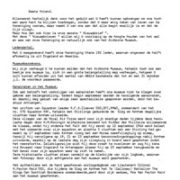
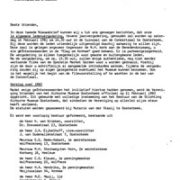
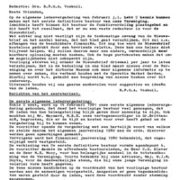
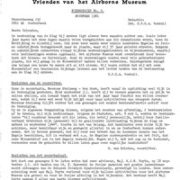
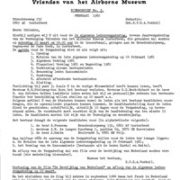
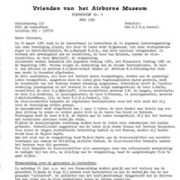
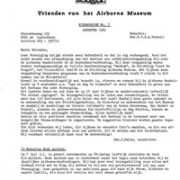
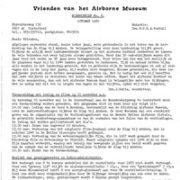
Plaats een Reactie
Vraag of reactie?Laat hier uw reactie achter.